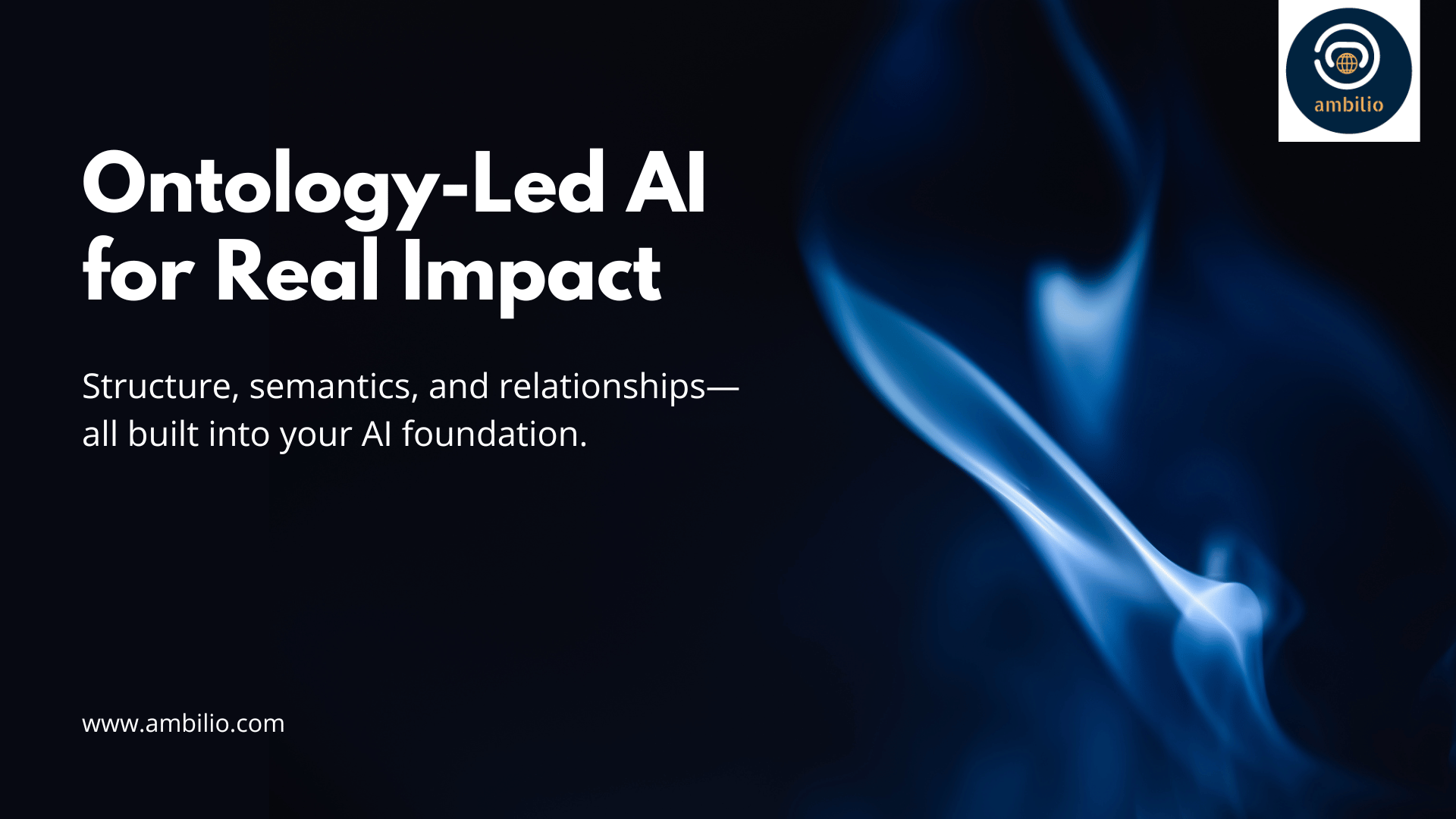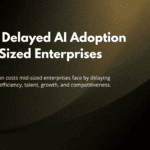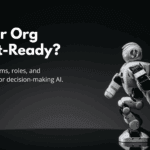Artificial Intelligence has advanced rapidly, especially with the emergence of large language models (LLMs) and autonomous agents that now influence how we work, learn, and make decisions. Despite their capabilities, these systems often produce unpredictable or contextually irrelevant results when applied to real-world scenarios due to the absence of structured domain knowledge. This challenge has led to a significant shift in AI design strategies, emphasizing the need for a well-defined domain model—a “map” that guides intelligent behavior. Ontology-led AI addresses this gap by embedding structure, semantics, and contextual logic into systems, enabling them to operate with greater reliability, precision, and relevance across complex domains where understanding relationships and rules is essential.
Understanding the Problem: Power Without Precision
Large language models and intelligent agents are excellent at processing natural language, retrieving information, and mimicking human-like conversation. But their effectiveness diminishes sharply when they’re placed in complex, domain-specific environments such as finance, healthcare, supply chains, or manufacturing—especially when there’s no clearly defined structure guiding their understanding.
Why does this happen?
- LLMs are statistical, not semantic: They generate answers based on probabilities, not on structured knowledge. This means they can often “hallucinate” or fabricate facts, misinterpret roles and relationships, or fail to maintain consistency in long chains of reasoning.
- Context is shallow: LLMs typically rely on immediate prompt context or retrieval from a vector store. Without a structured domain model, they have no awareness of persistent relationships—such as how customers, products, orders, and policies interconnect.
- Scalability becomes fragile: When deploying AI across departments or workflows, a lack of shared understanding (e.g., what a “client” means in one system vs. another) leads to duplication, miscommunication, and integration failures.
In short, the output becomes unpredictable because the model is operating without a “map” of the domain in which it’s supposed to function. That map is the ontology.
What Is an Ontology, and Why Does It Matter?
At its core, an ontology is a formal representation of knowledge within a specific domain. It defines key concepts (entities), their properties (attributes), and the relationships between them. Unlike a simple data schema, ontologies are expressive and semantic—they carry meaning, context, and logical structure.
For example, in a healthcare ontology:
- A “Doctor” is a type of “Person” who has a relationship with “Patients” and is authorized to create “Prescriptions.”
- A “Prescription” is linked to a “Medication,” which belongs to a “Drug Category.”
- “Appointments” have time constraints, associated locations, and may be dependent on insurance approval.
This structure isn’t just useful for human comprehension. When integrated into an AI system, ontologies allow models to reason, validate, query, and operate with significantly more relevance and reliability.
Why Ontology-Led AI Is the Future of AI Architecture
AI systems today are expected to operate with context awareness, domain alignment, and compliance with real-world rules. Ontology-led AI enables this in the following key ways:
1. Contextual Intelligence
Ontologies embed domain logic and relationships into the system. This allows AI models to:
- Understand how entities relate over time (e.g., “a product sold by a vendor but manufactured by a third party”).
- Carry forward memory across sessions using structured knowledge.
- Reduce hallucinations by grounding answers in verified relationships.
2. Consistency and Explainability
Ontological structures create a unified vocabulary and ruleset across an organization:
- Ensures all AI agents follow the same logic, minimizing inconsistencies.
- Supports explainable AI—outputs can be traced to ontological rules or paths.
- Provides transparency in compliance-heavy industries like banking or pharmaceuticals.
3. Semantic Retrieval and Reasoning
Traditional vector search retrieves documents based on textual similarity. But an ontology enables:
- Semantic search—retrieving based on meaning, not just matching words.
- Logic-driven queries—“Which customers placed an order for a product that later went out of stock?”
- Chaining relationships for multi-hop reasoning.
4. Agent Collaboration and Orchestration
As enterprises move toward multi-agent systems (MAS), ontologies act as the shared operating language:
- Agents can interact using a common schema and knowledge base.
- Tasks like data transformation, report generation, and workflow automation become interoperable.
- Different agents (e.g., sales, finance, customer support) can coordinate meaningfully.
5. Rapid Adaptation and Governance
Ontologies are modular and version-controlled. They allow:
- Easy updates when domain knowledge evolves.
- Rule enforcement and validation—preventing errors in workflows.
- Alignment between human knowledge and AI systems.
Ontology in Action: Real-World Use Cases
Palantir Foundry
Palantir’s data platform is a prominent example of ontology-led architecture. It uses Ontology Modeling as a central layer that ties together diverse data sources, workflows, and users. By defining objects like “Employee,” “Asset,” or “Shipment” and linking them to real-time data, Palantir enables operational workflows, AI agents, and dashboards to function in perfect sync.
Healthcare AI Systems
In medical AI applications, ontologies like SNOMED CT and UMLS provide the structure necessary for diagnosis support, patient monitoring, and research analysis. LLMs that are guided by these ontologies deliver safer and more accurate insights than those relying on general web-trained knowledge.
Enterprise Copilots
A finance copilot trained on structured ontologies can:
- Understand the distinction between “accrued liabilities” and “payables.”
- Generate reports following accounting standards.
- Alert anomalies based on semantic expectations (e.g., when expenses spike without corresponding income).
Designing Ontology-Led AI Systems: Best Practices
- Start with Use Cases
Define the problems your AI is solving. Identify the core entities and their relationships in that context. - Build Modular Ontologies
Avoid overly complex, monolithic models. Build small ontologies (micro-ontologies) that can be linked. - Integrate with LLMs Thoughtfully
Use ontology-driven grounding, memory, and retrieval augmentation. Consider using tools like LangChain, Semantic Kernel, or knowledge graphs. - Establish Governance
Treat ontologies like software code. Use version control, reviews, and testing. Align them with business definitions. - Train Teams on Semantic Thinking
Business analysts, data engineers, and AI developers should understand how to think in terms of relationships and structures—not just tables or prompts.
Final Thoughts: The Map Comes First
The excitement around generative AI, LLMs, and intelligent agents has rightly captured the imagination of enterprises and developers. But without a structured map—without ontologies—these powerful tools risk going astray, delivering inconsistent results and poor alignment with business goals.
Ontology-led AI is not just a methodology—it is a necessary evolution in AI architecture. It brings precision, consistency, and meaning into systems that otherwise operate on guesswork and syntax. For organizations seeking to scale AI responsibly and effectively, investing in structured domain models is no longer optional. It’s foundational.



